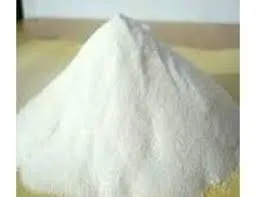
Dec . 21, 2024 16:48 Back to list
hpmc stands for
Understanding HPMC What Does HPMC Stand For?
In various fields of science and industry, acronyms and abbreviations are common, each carrying unique meanings based on the context they are used in. One such term that often surfaces, particularly in the realms of chemistry, pharmaceuticals, and construction, is HPMC. But what does HPMC stand for, and why is it important?
HPMC stands for Hydroxypropyl Methylcellulose. It is a versatile, non-ionic, cellulose ether derived from natural cellulose. HPMC is produced through the modification of cellulose—a natural polymer extracted from the cell walls of plants. The process of making HPMC involves the reaction of cellulose with propylene oxide and methyl chloride, leading to the formation of hydroxypropyl and methyl groups that modify the cellulose structure. This alteration grants HPMC a range of properties that make it suitable for various applications.
Understanding HPMC What Does HPMC Stand For?
In the pharmaceutical industry, HPMC is prominently used as a binder and a coating agent in tablet formulations. Its ability to gel and retain moisture aids in the sustained release of active pharmaceutical ingredients, leading to improved therapeutic outcomes. HPMC capsules are also favored over gelatin capsules, particularly for vegetarian or vegan products, as HPMC is derived from plant cellulose. This makes HPMC a more suitable option for a growing segment of health-conscious consumers.
hpmc stands for

In the construction industry, HPMC plays a crucial role in the formulation of dry-mix mortars, tile adhesives, and external wall insulation systems. When mixed with water, HPMC improves the workability of mortars, allowing for better adhesion, enhanced water retention, and improved performance during the curing process. This results in stronger, longer-lasting constructions. Additionally, its ability to impart thixotropic properties means that it can help create suspensions that maintain stability until disturbed, making installation easier.
HPMC is also widely used in cosmetic products and personal care items. Here, it functions as a thickening agent, helping to create gel-like textures in lotions, creams, and shampoos. It enhances product stability and ensures an even distribution of the active ingredients, providing a smoother application. Moreover, its compatibility with a broad range of formulations adds to its appeal in the cosmetic industry.
Another noteworthy application of HPMC is within the food industry, where it serves as a food additive. It acts as a thickener, emulsifier, and stabilizer, enhancing the texture and shelf-life of various food products. HPMC helps create the creamy texture in sauces and dressings and is often found in gluten-free products due to its ability to mimic some properties of gluten.
HPMC is celebrated for its safety and non-toxic nature. It is generally regarded as safe (GRAS) by the Food and Drug Administration (FDA) for use in food products, pharmaceuticals, and cosmetics. This status allows manufacturers to confidently incorporate HPMC into their formulations, knowing it is a safe choice for consumers.
In conclusion, HPMC, or Hydroxypropyl Methylcellulose, is a crucial substance with diverse applications across multiple industries. Its unique properties, such as solubility, thickening ability, and non-toxic nature, make it indispensable in pharmaceuticals, construction, cosmetics, and food industries. As consumer preferences continue to shift toward more plant-based and non-toxic products, the relevance of HPMC is set to grow. Whether improving the effectiveness of medications or enhancing the texture of our favorite foods and personal care products, HPMC stands out as a vital compound that exemplifies the intersection of nature and innovation. Understanding HPMC and its applications highlights the importance of chemistry in our everyday lives, ensuring that we appreciate the science behind the products we use.
-
Versatile Hpmc Uses in Different Industries
NewsJun.19,2025
-
Redispersible Powder's Role in Enhancing Durability of Construction Products
NewsJun.19,2025
-
Hydroxyethyl Cellulose Applications Driving Green Industrial Processes
NewsJun.19,2025
-
Exploring Different Redispersible Polymer Powder
NewsJun.19,2025
-
Choosing the Right Mortar Bonding Agent
NewsJun.19,2025
-
Applications and Significance of China Hpmc in Modern Industries
NewsJun.19,2025







